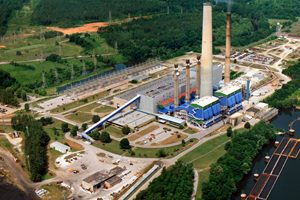
TVA Plan To Replace Fly Ash Ponds. Following the monumental and catastrophic Tennessee Valley Authority (TVA) fly ash spill that dumped over five million cubic yards of sludge into East Tennessee and its surrounding waterways, the TVA has come up with a plan to replace its fly ash ponds, says the Times Free Press. The devastating […]

TVA Plan To Replace Fly Ash Ponds. Following the monumental and catastrophic Tennessee Valley Authority (TVA) fly ash spill that dumped over five million cubic yards of sludge into East Tennessee and its surrounding waterways, the TVA has come up with a plan to replace its fly ash ponds, says the Times Free Press.
The devastating million gallon spill decimated homes—some beyond repair—and water and wildlife, destroying about 300 surrounding acres.
Now, the TVA is looking to replace the fly ash ponds at its Kingston Fossil Plant with dry ash storage, according to its 73-page correction action plan it submitted to state regulators, said the Times Free Press. The switch is expected to take two years, if approved. According to the TVA, collecting the fly ash in dry storage “will allow more flexible marketing and disposal options” and help minimize the risk of another ash pond leak.
The TVA also detailed its corrective plan of action to remove the spilled ash that had been accumulating for 50 years, half of which spilled in late December following heavy rains and cold temperatures. The weather conditions caused the “earthen dam” to break, creating the spill, explained the Times Free Press.
Fly ash is a waste product generated when coal is burned and, according to studies, contains significant quantities of heavy metals like arsenic, lead, and selenium, which can cause cancer and neurological problems. Of note, several days after the spill, the TVA had not issued any environmental warnings to nearby residents, and insisted there was no evidence yet of toxins in the waste.
Most recently, Tom Kilgore, TVA head, admitted that the fly ash spill was much worse than the TVA first admitted. Just prior, and of significant concern, researchers discovered that the massive fly ash spill is exposing area residents and the environment to some serious and dangerous health and environmental problems, such as radium and arsenic exposure.
Radium—a Group-A carcinogenic material according to the Environmental Protection Agency (EPA)—exposure can lead to cancer. Also, arsenic, a toxic metal, can increase the risk of some cancers, skin damage, and circulatory problems.
Meanwhile, the TVA claims that it will restore the area damaged by fly ash to a condition “as good, if not better than before” the accident, reported the Times New Press.
According to an earlier Knoxville News report, inspectors found the TVA Kingston pond sound based on the report of three engineers who inspected the facility and said that despite the raised pond’s walls seeping water and some scars in the structure as a result of erosion, the TVA plant was in “good shape.” The inspection was conducted on October 20, 2008 and was completed after the December 22 TVA fly ash spill.
Also, the massive spill was not TVA’s first accident and its records confirmed that a 1984 annual inspection report indicated that an interior dike failed and that exterior walls were not meant for additional loads, according to an earlier report by the Knoxville Biz.
At that time, additional studies were recommended; it is unclear if such studies occurred. Also, in 1984, a dike failure resulted in dredged material spilling into a then-dredged area as a result of a problem with an interior wall. In 2003, another accident, which dumped water and fly ash on to Swan Pond Road, occurred.
The personal injury attorneys at Parker Waichman LLP offer free, no-obligation case evaluations. For more information, fill out our online contact form or call 1-800-YOURLAWYER (1-800-968-7529).
Our Fly ash spill attorneys are here to help you when you need it the most.


